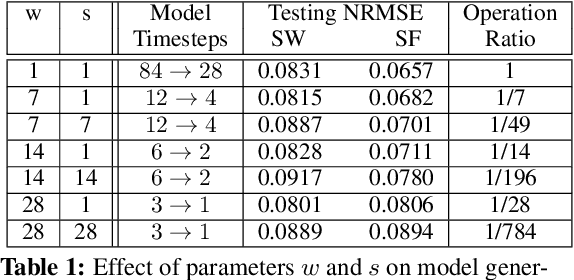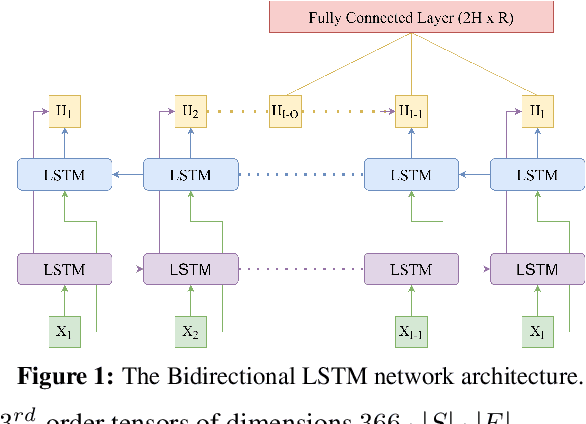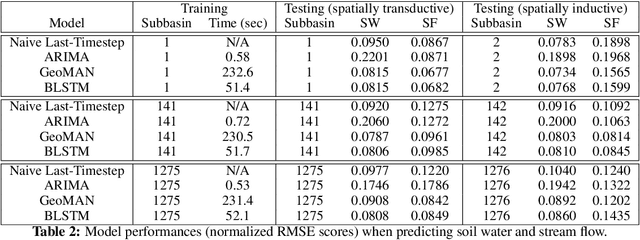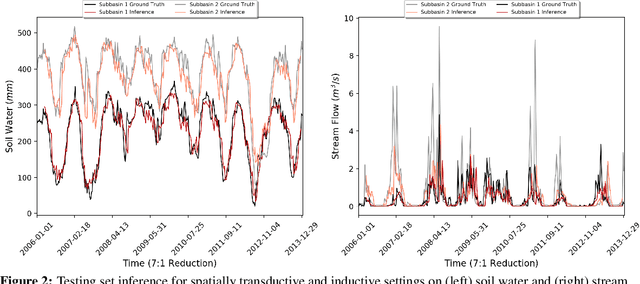Nicholas Majeske
Inductive Predictions of Extreme Hydrologic Events in The Wabash River Watershed
Apr 25, 2021



Abstract:We present a machine learning method to predict extreme hydrologic events from spatially and temporally varying hydrological and meteorological data. We used a timestep reduction technique to reduce the computational and memory requirements and trained a bidirection LSTM network to predict soil water and stream flow from time series data observed and simulated over eighty years in the Wabash River Watershed. We show that our simple model can be trained much faster than complex attention networks such as GeoMAN without sacrificing accuracy. Based on the predicted values of soil water and stream flow, we predict the occurrence and severity of extreme hydrologic events such as droughts. We also demonstrate that extreme events can be predicted in geographical locations separate from locations observed during the training process. This spatially-inductive setting enables us to predict extreme events in other areas in the US and other parts of the world using our model trained with the Wabash Basin data.
 Add to Chrome
Add to Chrome Add to Firefox
Add to Firefox Add to Edge
Add to Edge